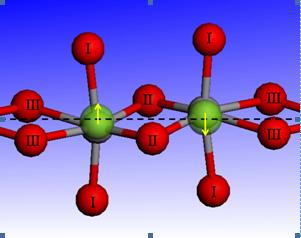| Understanding the MIT of VO2 from Electronic and Geometrical Structure |
| From: PublishDate:2013-06-15 Hits: |
VO2 exhibits a well know metal-insulator transition (MIT) at 341K from a low temperature insulating phase to a high temperature metallic phase, accompanied by a structural transition from a monoclinic lattice to a rutile lattice. Due to the simple lattice structure and the amazing nature, VO2 is an ideal template for study on strong electronic interaction system. Though numerous studies have been done, the mechanism of MIT of VO2 is still not clear. Recently, a group from the Facilityof Beijing Synchrotron Radiation (BSRF), Institute of High Energy Physics, has gained insight into this question by using W doping which induce MIT of VO2 at room temperature. Their work has been published on Physical Chemistry Chemical Physics. According to the concentration of W dopant, the samples are at different stages of MIT. The group excluded these samples which are two phases co-existing by XRD analysis, and focused on samples in pure monoclinic phase, therefore eliminating the influence of phase transition. They obtained detail information of local structure around W dopants and V atoms. Their results revealed that W dopant will introduce an internal stress along V-V chains, which increases with the doping concentration and remain static during the MIT process. They also found an influence of the internal stress on the local structure of V atoms. As the doping concentration increase, the anti-ferroelectric distortion decrease, which has a great effort on the hybridization of O 2p and V 3d electronic orbits.The electronic structure changes is detected by O K edge XANES spectra. Their results shown that the changes of hybridization strength have a clear orbital selectivity. In addition to the importance apex Oxygen atoms which relate to π*band, the bridge Oxygen atoms interacting with V-V pairs, which results in weakening of splitting of d// band, also play a great role in the MIT of VO2.
This work shine lights on the mechanism of MIT of VO2. Moreover, by combining XNAES and EXAFS, the group obtained geometric and electronic structure. They believe that they discussed a possible route to better understand the interplay between charge, lattice and transport properties characteristic of VO2 and many similar transition metal oxide systems.
Article: Cheng Si, Wei Xu, Huan Wang, Jing Zhou, Abduleziz Ablat, Linjuan Zhang, Jie Cheng, Zhiyun Pan, Lele Fan, Chongwen Zou, and Ziyu Wu*, Physical Chemistry Chemical Physics, 2012, 14, 15021–15028. |
|
|
| Chinese
Science Highlights
Home /
Copyright © 2011 - 2012 Beijing Synchrotron Radiation Facility


